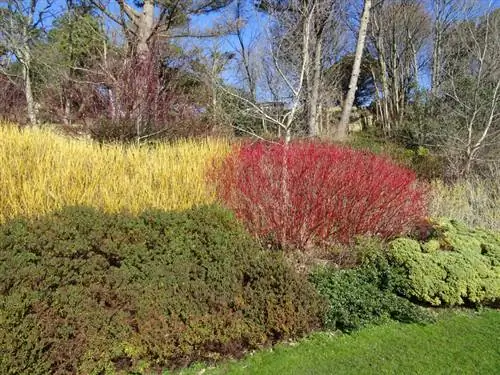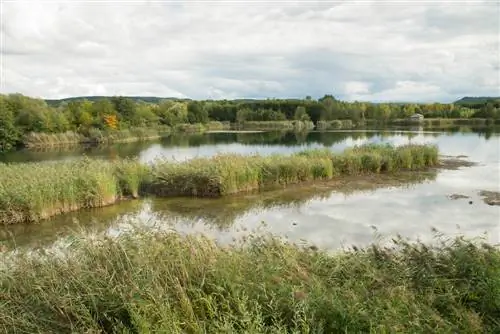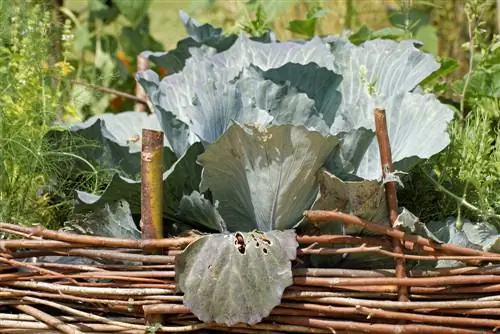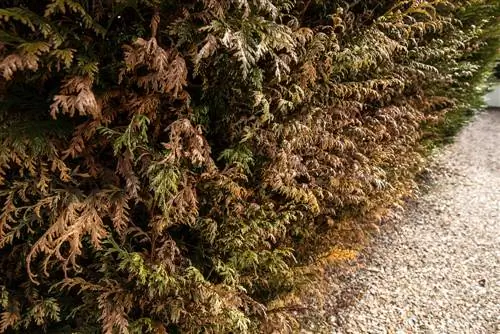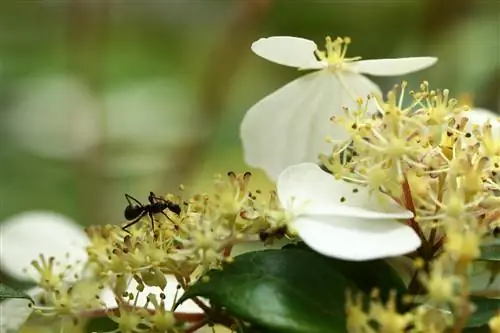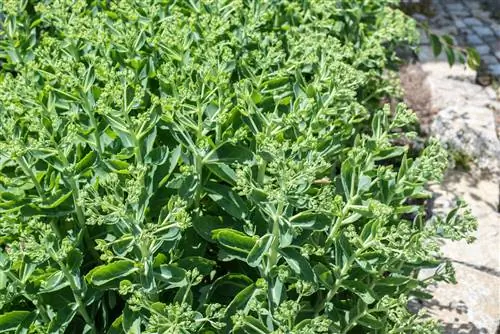- Author admin [email protected].
- Public 2023-12-16 16:46.
- Last modified 2025-01-23 11:20.
Red dogwood (Cornus sanguinea) is not only an aesthetically pleasing tree, but - as a native plant - is extremely ecologically valuable. The flowers serve as valuable pasture for bees, butterflies and other insects, and the fruits, which ripen in autumn, provide no less important food for birds and other wild animals. The deciduous shrub gets its name from both its reddish-colored wood and its enchanting, strong red autumn color. This is particularly effective when planting a hedge.
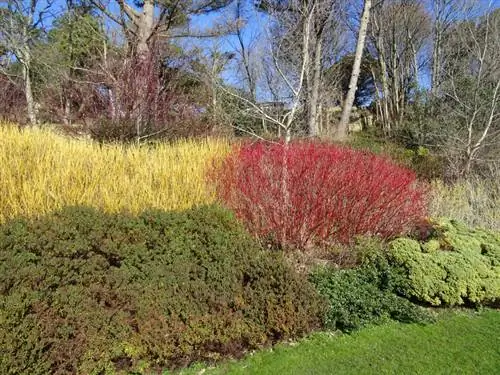
How do you plant a red dogwood hedge?
The red dogwood is ideal as a dense hedge plant and embankment plant. It is extremely easy to cut, hardy and prefers a sunny to partially shaded location with moist, slightly acidic soil. Planting distance should be about one meter.
Great for planting hedges or embankments
The red dogwood is very suitable for planting a high and - due to its very good branching - also a dense hedge. Due to its many root runners that work to compact the soil, it can also be used as embankment planting - for example to fortify and thus secure sloping ditches. In addition to a pure dogwood hedge, you can also use the tree for mixed planting, for example in combination with rhododendron, boxwood or thuja.
Location and care of the hedge
Since the red dogwood, sometimes also known as the blood-red dogwood, is very vigorous, you should plant the young plants about a meter apart for a hedge. The tree can be around five meters high and at least three meters wide, so it requires a lot of space. It is best to plant the dogwood in a sunny to light, partially shaded location with moist, slightly acidic soil. To ensure that soil conditions remain optimal, mulching is recommended. This also protects the hedge from drying out in the hot summer months, although you should water the bushes regularly in dry phases. As a native plant, the red dogwood is absolutely winter hardy.
Dogwood hedge can be cut back heavily
Another argument for planting it as a hedge is the absolute tolerance of the red dogwood to cutting. The tree can easily tolerate heavy pruning, although the best time for such a measure is directly after flowering. Regular thinning is also useful in order to remove old wood and thus pave the way for beautiful, reddish young shoots - and of course better branching.
Tip
The bark, leaves and roots of the red dogwood are slightly poisonous, but its fruits are inedible only when raw. However, you can cook these into jam, jelly or fruit juice - such products taste particularly good with sweet apples.

